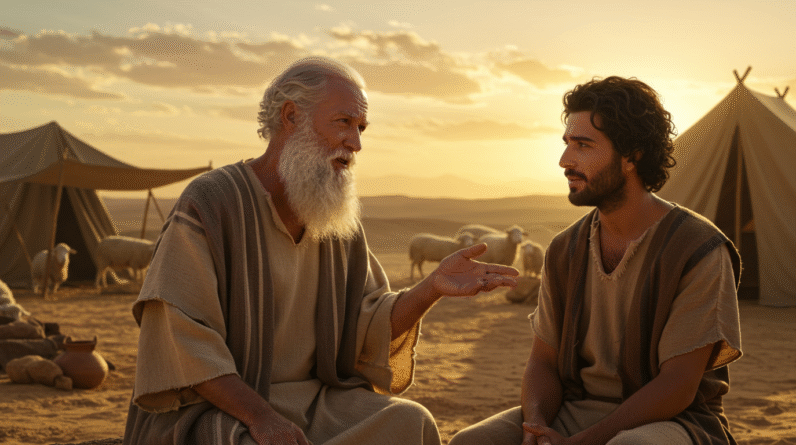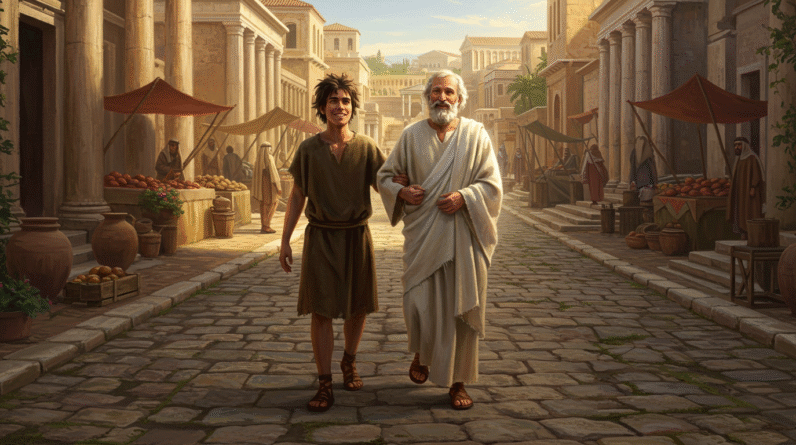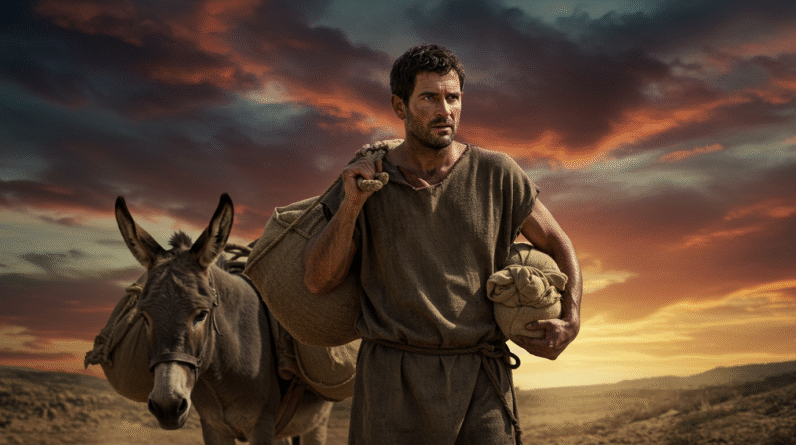Dive into the transformative journey of Sosthenes from opposition to faith, exploring themes of grace and resilience within the vibrant early Christian community.

Exploring Sosthenes: A Journey Through Acts and Corinthians
Our exploration today centers around an intriguing figure in the New Testament, Sosthenes, whose brief appearances in the Scriptures provide us with insights into themes of transformation, faith, and the power dynamics within early Christianity. Situated among the bustling complexities of the early Church, Sosthenes serves as an embodiment of the transformative power of faith and reconciliation.
Sosthenes in the World of the New Testament
In the bustling marketplace of ideas and faith that was the early Church, Sosthenes emerges as a character of particular intrigue. Found primarily in the Acts of the Apostles and 1 Corinthians, Sosthenes’ narrative is woven into the broader tapestry of Paul’s missionary journeys and the establishment of Christian communities across the Roman Empire. His experiences point to the realities faced by those early converts and leaders, navigating the friction between the emerging Christian faith and the established Jewish traditions and Greco-Roman ideologies.
The Story of Sosthenes in the Bible
Sosthenes steps onto the biblical stage in quite a dramatic fashion. We first encounter him in Corinth, a lively, diverse hub of commerce and culture. The Apostle Paul had been preaching the gospel there, encountering both opposition and acceptance. Sosthenes was the ruler of the synagogue, a position of considerable influence and responsibility. However, the tension between the Jewish community and the nascent Christian group came to a head when the opposition sought to bring Paul before Gallio, the Roman proconsul, accusing him of teaching against the law. In a surprising turn of events, Gallio dismissed the case, refusing to intervene in what he deemed an internal religious dispute. At this moment, Sosthenes, who was associated with the synagogue’s leadership, was beaten by the crowd, possibly as a scapegoat or as a protest against Gallio’s decision. This account is captured succinctly in Acts 18:17.
Interestingly, this is not where Sosthenes’ story ends. When we next hear of him, it is in a letter from Paul to the Corinthians. In the opening of 1 Corinthians 1:1, Paul sends greetings “from Paul, called to be an apostle of Christ Jesus by the will of God, and Sosthenes our brother.” This is a striking transformation—Sosthenes is no longer identified with opposition to the Christian message but as a cherished brother in the faith, a co-author, and a partner with Paul. His inclusion as a co-sender of the letter indicates a deeper involvement in the Christian community, suggesting that somewhere along the line, Sosthenes had a significant change of heart.
Lessons from the Life of Sosthenes
Sosthenes’ journey from synagogue leader, possibly hostile to Christian teachings, to a fellow worker with Paul, encapsulates several profound lessons. Firstly, his story highlights the transformative power of grace and the possibilities for reconciliation and unity within the body of Christ. His life reminds us that no matter the starting point of our journey, faith has the power to bridge divides and reshape our trajectories.
Furthermore, Sosthenes’ experience offers a poignant lesson in resilience and change. Beaten publicly, perhaps humiliated, he emerges not as a victim of his circumstances but as a significant contributor to the early Church. This implies a certain strength and integrity, illustrating that personal hardships can be a refining fire that leads to greater purpose and communal harmony.
Lastly, Sosthenes’ transformation showcases the inclusivity of the Christian message. The very leader who might have once opposed Paul was embraced into the Christian mission, demonstrating that the early Church was a place of second chances and new beginnings—a lesson equally relevant today as it was in Corinth.
Connecting Sosthenes’ Story to Today’s World
Understanding Sosthenes’ story can shed light on some of the modern struggles between tradition and new ways of thinking, faith and skepticism, change, and continuity. In today’s world, where communities often fracture along ideological lines, Sosthenes’ journey from opposition to collaboration serves as a reminder that unity is possible even among diverse and sometimes conflicting perspectives.
In workplaces, social circles, and familial spaces, we encounter varied beliefs and experiences. Sosthenes’ reconciliation with Paul prompts us to ponder if we too might build bridges where there are currently walls. It encourages an openness to transformation, both personal and communal, reminding us that our past actions do not have to define our future.
A Key Bible Verse: Sosthenes’ Transformation
Sosthenes’ involvement is succinctly encapsulated in 1 Corinthians 1:1: “Paul, called to be an apostle of Christ Jesus by the will of God, and our brother Sosthenes.” This verse signifies a shift from conflict to companionship, highlighting the profound impact of grace and community. It is emblematic of the early Church’s capacity to break down barriers and foster reconciliation and faith.
A Thought-Provoking Question
Reflecting on the story of Sosthenes, consider: Who in your life might be a modern-day Sosthenes—an individual once perceived as an adversary but potentially a future ally? How might you extend the hand of reconciliation and embody the transformative grace demonstrated in this narrative?
Historical and Cultural Context of Sosthenes
Understanding Sosthenes’ world adds a rich layer to his story. Corinth was a cosmopolitan city, teeming with diverse cultures and beliefs. It served as a microcosm of the challenges faced by early Christians in a pluralistic society. The Roman legal environment, illustrated by Gallio’s dismissal of Paul’s case, reflects a larger context in which Christianity was navigating its identity and survival. Sosthenes was at the heart of this intersection between tradition and new belief systems, making his journey all the more compelling.
Comparison with Other Biblical Figures
Sosthenes’ narrative bears similarities with other biblical figures who underwent significant transformations, such as the Apostle Paul himself. Initially a persecutor of Christians, Paul too experienced a dramatic conversion and became one of Christianity’s most fervent advocates. Similarly, Sosthenes moves from potential opposition to embrace of the Christian faith, illustrating that the road to faith is often paved with unexpected turns and profound personal transformations.
A Short Prayer Inspired by Sosthenes’ Journey
Let us offer a prayer for openness and transformation in our own lives:
“Lord, help us to embrace the transformative power of Your grace. Grant us the courage to reconcile with those we perceive as opponents, and open our hearts to the possibilities of unity and new beginnings. May we, like Sosthenes, find our place in Your story, contributing to the growth and harmony of our communities. Amen.”
In your own spiritual journey, take some time to meditate on the scripture references provided (Acts 18:17, 1 Corinthians 1:1) for deeper insight and reflection.







